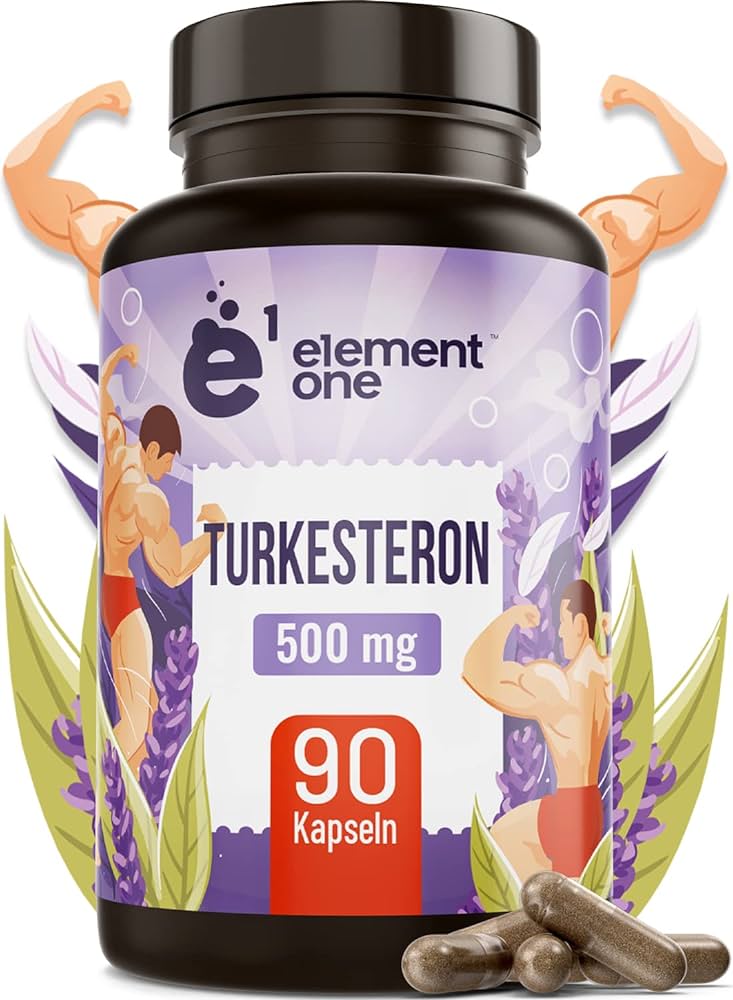Understanding the most effective training methods is essential for achieving your fitness goals, whether you aim to lose weight, build muscle, or enhance endurance. This article explores two popular approaches: interval training and steady-state cardio. By examining their unique benefits and scientific principles, you will gain insight into how to tailor your workouts to maximize results.
With actionable advice on creating a balanced workout plan that incorporates both training styles, this guide will help you develop a routine that aligns with your personal fitness objectives, ultimately leading to improved health and performance.
In this article you will find:
Understanding the Science Behind Intervals and Cardio
When it comes to achieving your fitness goals, understanding the science behind different training methods is crucial. Intervals and cardio are two popular approaches that can lead to effective fat loss and improved fitness levels. In this section, we will delve into the biological mechanisms, metabolic responses, and the overall impact of these two training styles on your body.
The Basics of Cardio
Cardio, short for cardiovascular exercise, primarily focuses on sustaining a moderate level of exertion over an extended period. This method promotes endurance and enhances cardiovascular health. During steady-state cardio, such as jogging or cycling at a consistent pace, your body relies on aerobic metabolism to fuel the activity. Here’s how it works:
- Energy Production: Your body uses oxygen to convert carbohydrates and fats into energy, which supports prolonged activity.
- Fat Oxidation: Steady-state cardio promotes the oxidation of fat as a fuel source, making it effective for fat loss when performed consistently.
- Heart Health: Regular cardio strengthens the heart muscle, improving circulation and lowering the risk of heart disease.
The Science of Interval Training
In contrast, interval training involves alternating periods of high-intensity exercise with low-intensity recovery periods. This style of training can take various forms, including High-Intensity Interval Training (HIIT). The physiological benefits of interval training are profound:
- Increased Metabolic Rate: The intense bursts of activity elevate your metabolic rate, leading to more calories burned even after the workout.
- Enhanced Anaerobic Capacity: Interval training improves your body’s ability to perform at high intensities by increasing anaerobic energy pathways.
- Time Efficiency: Short, intense workouts can yield results comparable to longer steady-state sessions, making it ideal for those with limited time.
Comparative Metabolic Responses
Research has shown that interval training can lead to greater fat loss compared to traditional cardio. This occurs due to the following:
- EPOC Effect: Excess Post-Exercise Oxygen Consumption (EPOC) refers to the increased rate of oxygen intake following strenuous activity. HIIT can elevate EPOC significantly, leading to more calories burned post-workout.
- Hormonal Changes: High-intensity intervals can stimulate the release of hormones like epinephrine and norepinephrine, which promote fat breakdown.
- Muscle Engagement: Interval training engages more muscle fibers, which can lead to improved body composition as muscle mass increases and fat decreases.
The Role of Individual Goals and Preferences
While both interval training and steady-state cardio offer distinct advantages, the choice between the two largely depends on personal goals and preferences. Some individuals may thrive on the challenge and variety of intervals, while others may prefer the rhythmic nature of traditional cardio. Understanding your own body and what motivates you is essential for long-term adherence to any fitness routine.
For more in-depth insights into the benefits of different exercise modalities, you can explore this article on HIIT and its impact on fitness.
Benefits of Interval Training for Fat Loss
When it comes to shedding unwanted pounds and enhancing overall fitness, interval training has emerged as a powerful strategy. This method not only helps in burning fat more efficiently but also offers a variety of other benefits that contribute to a healthier lifestyle. In this section, we will explore the specific advantages of interval training, particularly in the context of fat loss.
Maximized Caloric Burn
One of the most compelling reasons to incorporate interval training into your workout routine is its ability to maximize caloric burn. During high-intensity intervals, your body requires significantly more energy than during steady-state exercises. This leads to:
- Higher Caloric Expenditure: Short bursts of intense activity increase the total number of calories burned during a workout compared to traditional cardio.
- Post-Workout Burn: The phenomenon known as Excess Post-Exercise Oxygen Consumption (EPOC) means that your body continues to burn calories even after the workout has ended, enhancing overall fat loss.
Improved Insulin Sensitivity
Interval training has been shown to improve insulin sensitivity, which is crucial for fat metabolism. Enhanced insulin sensitivity means your body can more effectively utilize carbohydrates for energy rather than storing them as fat. Key points include:
- Regulated Blood Sugar Levels: Better insulin sensitivity helps maintain stable blood sugar levels, reducing the likelihood of fat storage.
- Reduced Risk of Metabolic Disorders: Improved insulin sensitivity lowers the risk of conditions like type 2 diabetes, which can be associated with excess body fat.
Preservation of Muscle Mass
Another significant benefit of interval training is its ability to preserve muscle mass while promoting fat loss. Unlike prolonged steady-state cardio, which can lead to muscle breakdown, interval training helps maintain lean muscle. This is essential for:
- Increased Metabolic Rate: Muscle tissue burns more calories at rest compared to fat tissue, which means maintaining muscle can help you burn more calories throughout the day.
- Enhanced Body Composition: As fat is lost and muscle is preserved, the overall body composition improves, leading to a leaner appearance.
Time Efficiency
In today’s fast-paced world, time is often a limiting factor when it comes to exercise. Interval training offers a time-efficient solution, allowing individuals to achieve significant results in shorter workout durations. Key advantages include:
- Quick Workouts: Many interval sessions can be completed in 20-30 minutes, making them accessible for those with busy schedules.
- Versatile Formats: Interval training can be adapted to various exercises, including running, cycling, and bodyweight workouts, providing flexibility in your routine.
Enhanced Mental Toughness
Beyond physical benefits, interval training can also improve mental resilience. The intense nature of these workouts challenges individuals to push through discomfort, leading to:
- Increased Confidence: Overcoming challenging intervals can boost self-esteem and confidence in one’s physical abilities.
- Greater Motivation: The variety and intensity of interval workouts can keep fitness routines engaging, reducing the likelihood of burnout.
To delve deeper into the science and benefits of interval training, consider checking out this article on HIIT and its advantages.
How Steady-State Cardio Fits into Your Fitness Goals
Steady-state cardio remains a cornerstone of many fitness routines, offering a reliable approach to improving cardiovascular health, endurance, and fat loss. While high-intensity interval training (HIIT) has gained popularity, understanding how steady-state cardio fits into your overall fitness goals is essential. In this section, we will explore the unique advantages of steady-state cardio and how it can complement various fitness objectives.
Building Endurance and Stamina
One of the primary benefits of steady-state cardio is its ability to enhance endurance and stamina. Engaging in activities such as running, cycling, or swimming at a consistent pace allows your body to adapt to prolonged exertion. Key aspects include:
- Increased Aerobic Capacity: Regular steady-state sessions improve your heart’s efficiency, enabling it to pump more blood with each beat and enhancing overall aerobic capacity.
- Longer Duration Activities: By building endurance, you can participate in longer activities such as marathons or cycling events, which can be both fulfilling and beneficial for overall health.
Effective Fat Burning
While interval training is known for its high caloric burn, steady-state cardio also plays a crucial role in fat loss. Engaging in moderate-intensity cardio can promote fat oxidation, especially when performed consistently. Consider the following:
- Sustained Energy Use: During steady-state cardio, your body primarily utilizes fat as a fuel source, making it effective for those aiming to lose weight over time.
- Caloric Deficit: When combined with a balanced diet, steady-state cardio can help create a caloric deficit, which is essential for weight loss.
Lower Risk of Injury
For many individuals, especially beginners or those returning to exercise, steady-state cardio presents a lower risk of injury compared to high-impact or high-intensity workouts. This makes it an ideal choice for:
- Gradual Progression: Steady-state cardio allows for gradual increases in intensity and duration, helping to build a solid fitness foundation.
- Joint Health: Activities like cycling and swimming are low-impact, reducing stress on the joints while still providing an effective workout.
Stress Relief and Mental Well-Being
Steady-state cardio also offers psychological benefits that can enhance overall well-being. Engaging in regular aerobic exercise is known to:
- Boost Mood: Physical activity releases endorphins, which can help alleviate stress and promote a positive mood.
- Enhance Focus: Many individuals find that steady-state cardio provides a meditative quality, allowing for mental clarity and improved focus.
Flexibility in Scheduling
Another advantage of steady-state cardio is its flexibility in fitting into various schedules. Whether you prefer morning runs, lunchtime walks, or evening bike rides, steady-state workouts can be easily integrated into your daily routine. Consider these points:
- Consistency: The ability to engage in steady-state cardio at any time makes it easier to maintain a consistent workout schedule.
- Social Interaction: Steady-state activities can often be done in groups or with friends, adding a social element to your fitness journey.
For a deeper dive into the benefits of steady-state cardio and how it can complement your overall fitness strategy, explore this resource on aerobic exercise and its impact on health.
Creating a Balanced Workout Plan for Optimal Results
To achieve your fitness goals effectively, creating a balanced workout plan is essential. This plan should integrate various training modalities, including steady-state cardio, interval training, and strength exercises, tailored to your individual needs and objectives. In this section, we will explore how to design a comprehensive workout plan that maximizes results while keeping you engaged and motivated.
Assessing Your Fitness Goals
Before you start crafting your workout plan, it’s crucial to clearly define your fitness goals. Understanding what you want to achieve will guide your training choices. Consider the following:
- Weight Loss: If your primary goal is to lose weight, focus on incorporating both cardio and strength training.
- Muscle Gain: For those aiming to build muscle, prioritize resistance training with adequate recovery.
- Improved Endurance: If your goal is to enhance stamina, include longer steady-state cardio sessions along with interval training.
Structuring Your Weekly Workout Schedule
A well-structured weekly schedule is vital for balanced training. Here’s a sample framework to consider:
- Monday: Interval Training (30 minutes) – Focus on high-intensity bursts followed by rest.
- Tuesday: Strength Training (Full Body) – Incorporate compound exercises targeting major muscle groups.
- Wednesday: Steady-State Cardio (45 minutes) – Engage in moderate-intensity activities like jogging or cycling.
- Thursday: Rest or Active Recovery – Light yoga or stretching to promote recovery.
- Friday: Interval Training (30 minutes) – Repeat with variations to keep the workouts fresh.
- Saturday: Strength Training (Upper Body/Lower Body Split) – Focus on different muscle groups for balanced strength.
- Sunday: Steady-State Cardio or Outdoor Activity – Enjoy a leisurely walk, hike, or swim.
Incorporating Variety and Progression
To prevent plateaus and maintain motivation, it’s important to incorporate variety and progression in your workouts. Here’s how:
- Exercise Variation: Change exercises every 4-6 weeks to challenge different muscle groups and keep workouts interesting.
- Intensity Adjustments: Gradually increase the intensity or duration of your workouts to continue making progress.
- Cross-Training: Incorporate different types of activities (e.g., swimming, cycling, martial arts) to enhance overall fitness.
Listening to Your Body
While it’s essential to follow your workout plan, it’s equally important to listen to your body. Pay attention to signs of fatigue or discomfort, and be willing to adjust your routine as needed:
- Rest Days: Allow adequate recovery time to prevent overtraining and reduce the risk of injury.
- Modify Workouts: If you feel fatigued, consider reducing the intensity or duration of your workouts.
Nutrition and Hydration
No workout plan is complete without addressing nutrition and hydration. Fueling your body properly can enhance performance and recovery:
- Balanced Diet: Consume a mix of carbohydrates, proteins, and healthy fats to support energy needs and muscle recovery.
- Stay Hydrated: Drink plenty of water before, during, and after workouts to maintain optimal performance.
For more insights on how to create effective workout plans, you can explore this resource on effective exercises for fat loss. Understanding the differences between interval training and steady-state cardio is vital for achieving fitness goals. Interval training, characterized by alternating high-intensity bursts with low-intensity recovery, maximizes caloric burn and improves metabolic rate, making it an efficient fat-loss strategy. It also enhances insulin sensitivity and preserves muscle mass, while its time-efficient nature appeals to those with busy schedules. In contrast, steady-state cardio focuses on maintaining a consistent exertion level, promoting endurance, cardiovascular health, and effective fat burning over time.
To create a balanced workout plan, clearly define your fitness goals—whether it’s weight loss, muscle gain, or improved endurance. Structure your weekly schedule to incorporate both interval and steady-state cardio, along with strength training, while allowing for adequate rest and recovery. Incorporate variety and progression to prevent plateaus, and prioritize a balanced diet and hydration to support your training efforts. By tailoring your approach to your individual needs, you can maximize results and maintain motivation in your fitness journey.




